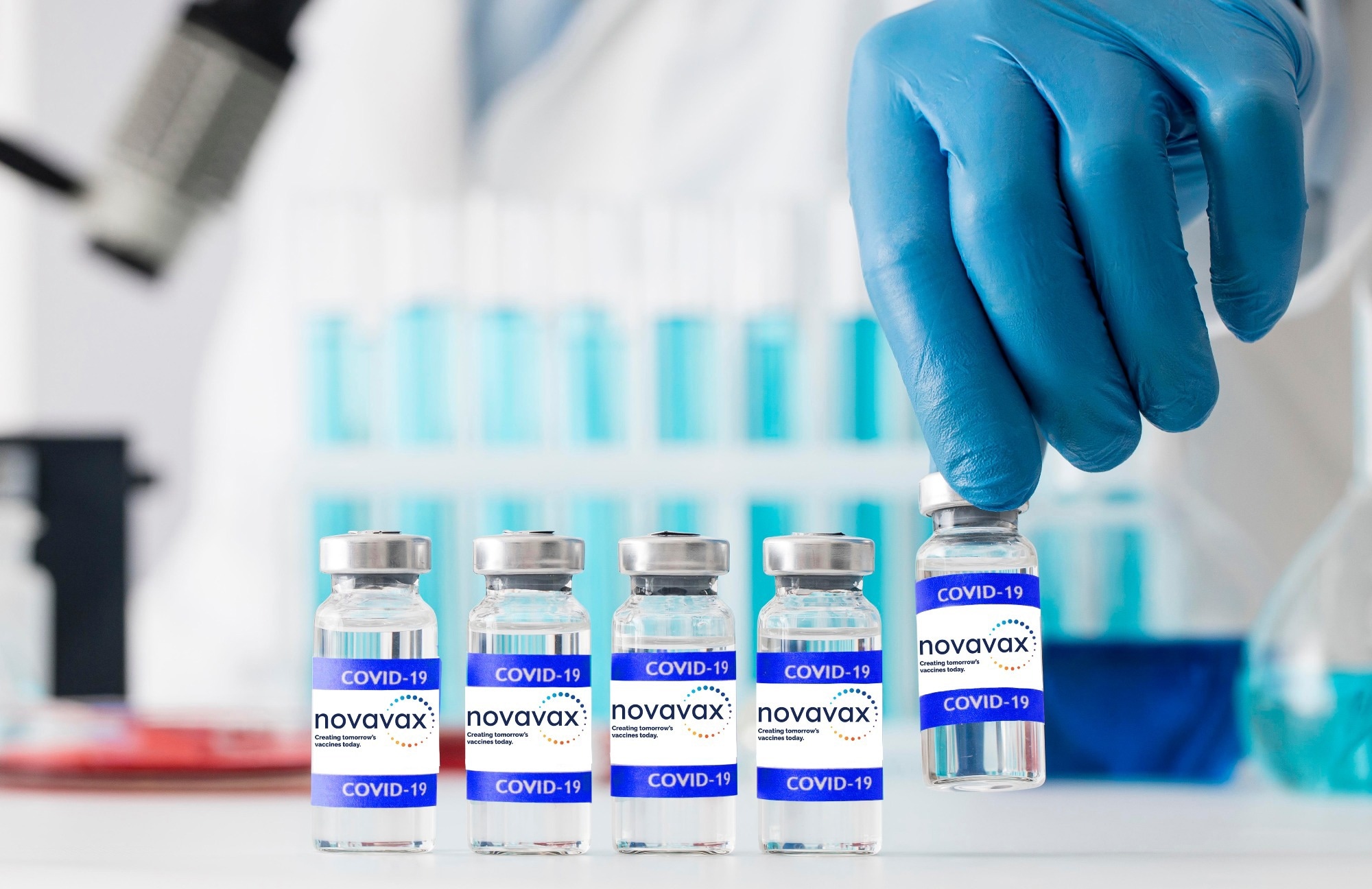A recent study posted to Research Square* preprint server evaluated the neutralizing antibody titers against the severe acute respiratory syndrome coronavirus 2 (SARS-CoV-2) Omicron variant and its sub-lineages after two and three doses of the Novovax protein nanoparticle vaccine NVX-CoV2373.

Background
The emergent SARS-CoV-2 Omicron subvariants carry multiple mutations in the spike protein region, which increases their immune evasive abilities, allowing these subvariants to escape the neutralizing antibodies induced by vaccines and previous SARS-CoV-2 infections. The Omicron subvariants BA.4, and BA.5 have become globally dominant and exhibit resistance to most vaccines.
However, booster doses with messenger ribonucleic acid (mRNA) vaccines have been presenting some neutralizing action against these Omicron subvariants. Furthermore, phase three trials with the protein nanoparticle vaccine NVX-CoV2373 have been observed to be 90% efficient against symptomatic infections and 100% efficient against severe coronavirus disease 2019 (COVID-19). This protein nanoparticle vaccine has the added advantage of improved stability and fewer cold chain requirements. However, the efficacy of booster doses of the NVX-CoV2373 vaccine against Omicron BA.4/BA.5 and other subvariants remains unexplored.
About the study
In the present study, serum samples were collected from individuals in South Africa who had been administered two or three doses of the Novovax NVX-CoV2373 vaccine. The samples were collected 14 and 35 days after the second and third doses, respectively. The researchers also sampled individuals vaccinated with two doses of the adenoviral vector vaccine AD26.COV2.S or two and three doses of the mRNA vaccine BNT162b22.
Pseudoviruses containing firefly luciferase gene and spike mutations for the ancestral (D614G) strain and the Beta and Omicron BA.1 variants, as well as the BA.4 and BA.5 subvariants, were used to test the neutralization efficacy of NVX-CoV2373 vaccine-induced antibodies. Modified 293T/ACE2. MF cells over-expressing the human angiotensin-converting enzyme-2 (ACE-2) were used to test the neutralizing efficacy.
Results
The results indicated that two weeks after the second NVX-CoV2373 vaccine, the geometric mean titers (GMT) against the D614G strain were the highest at 1401. The neutralization titers showed an 8.1-fold decrease against the Beta variant with a GMT of 173. Against the Omicron BA.1 variant and the BA.4/BA.5 subvariants, the neutralization titers were 41- and 30-fold lower, with GMT values of 34 and 47, respectively. For Omicron BA.1, the neutralization titers for 79% of the samples were below the detection limit, as was the case for 59% of the samples against the BA.4/BA.5 subvariants.
However, the neutralization titers were much higher against the Omicron BA.1 and BA.4/BA.5 subvariants when measured a month after the booster (third) dose of NVX-CoV2373 was administered.
While the neutralization titers against the ancestral D614G strain increased to a GMT of 10862, the titers against Beta, Omicron BA.1, and Omicron BA.4/BA.5 also increased to GMT values of 1733, 1197, and 582, showing increases that were 10-, 35-, and 12-fold, respectively. However, the titers against Beta, Omicron BA.1, and Omicron BA.4/BA.5 were still six to 18-fold lower than that against the ancestral strain.
In comparison, two doses of the adenoviral vector vaccine AD26.COV2.S elicited much lower neutralization titers than three doses of the NVX-CoV2373 vaccine or the mRNA vaccine BNT162b22. The GMT values against Omicron BA.1 in individuals vaccinated with two doses of AD26.COV2.S were 10- and 14-fold lower than in those vaccinated with three doses of NVX-CoV2373 and BNT162b22, respectively. Against the BA.4/BA.5 subvariants, AD26.COV2.S elicited 11- and 12-fold lower neutralizing titers than those elicited by NVX-CoV2373 and BNT162b22, respectively.
Furthermore, all plasma samples from individuals with three doses of the NVX-CoV2373 or BNT162b22 vaccine showed neutralizing action against Omicron BA.1, and BA.4/BA.5 subvariants, while only 13% to 50% of the plasma samples from individuals with two doses of AD26.COV2.S showed neutralizing activity against the Omicron subvariants.
Conclusions
To summarize, in this study, a team of researchers from South Africa evaluated the neutralization titers elicited against the ancestral SARS-CoV-2 strain, the Beta and Omicron BA.1 variants, and the BA.4/BA.5 Omicron subvariants, in individuals vaccinated with three doses of the protein nanoparticle vaccine NVX-CoV2373. They also compared the neutralizing titers to those elicited by two doses of the AD26.COV2.S adenoviral vector vaccine or three doses of the BNT162b22 mRNA vaccine against Omicron BA.1 and BA.4/BA.5.
The results indicated that while two doses of the NVX-CoV2373 vaccine showed a significant reduction in neutralizing titers against Beta, Omicron BA.1, and Omicron BA.4/BA.5, as compared to the ancestral D614G strain, a third dose of the vaccine considerably increased the GMT values against all the variants tested. Three doses of the BNT162b22 vaccine showed comparable results, but two doses of AD26.COV2.S did not give adequate protection against the Omicron subvariants.
*Important notice
Research Square publishes preliminary scientific reports that are not peer-reviewed and, therefore, should not be regarded as conclusive, guide clinical practice/health-related behavior, or treated as established information.
- Jinal N. Bhiman, Simone I. Richardson, Bronwen E. Lambson et al. (2022). Novavax NVX-CoV2373 triggers potent neutralization of Omicron sub-lineages. Research Square. doi: https://doi.org/10.21203/rs.3.rs-2048259/v1 https://www.researchsquare.com/article/rs-2048259/v1
Posted in: Medical Science News | Medical Research News | Disease/Infection News
Tags: ACE2, Angiotensin, Antibodies, Antibody, Cold, Cold chain, Coronavirus, Coronavirus Disease COVID-19, covid-19, Efficacy, Enzyme, Gene, Luciferase, Nanoparticle, Omicron, Protein, Research, Respiratory, Ribonucleic Acid, SARS, SARS-CoV-2, Severe Acute Respiratory, Severe Acute Respiratory Syndrome, Spike Protein, Syndrome, Vaccine
.jpg)
Written by
Dr. Chinta Sidharthan
Chinta Sidharthan is a writer based in Bangalore, India. Her academic background is in evolutionary biology and genetics, and she has extensive experience in scientific research, teaching, science writing, and herpetology. Chinta holds a Ph.D. in evolutionary biology from the Indian Institute of Science and is passionate about science education, writing, animals, wildlife, and conservation. For her doctoral research, she explored the origins and diversification of blindsnakes in India, as a part of which she did extensive fieldwork in the jungles of southern India. She has received the Canadian Governor General’s bronze medal and Bangalore University gold medal for academic excellence and published her research in high-impact journals.
Source: Read Full Article